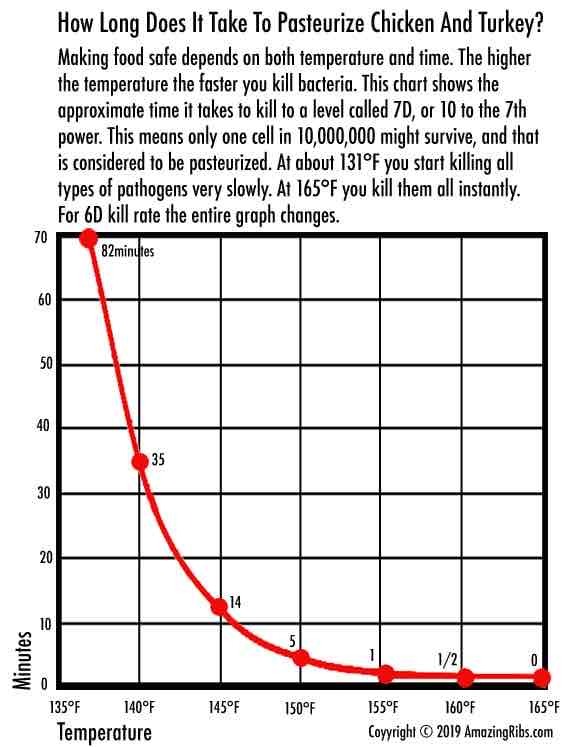Can someone translate from freedom into logical
196
Be sure to follow the rule before you head out.
Rule: You must post before you leave.
What is that in a normal unit?
Life hack: if you don't eat meat you don't need to worry about meatborne illnesses.
I'm finding the way the points and the y-axis are lining up to be, dare I say, mildly infuriating. Why is 82 at 70? Why is 0 not at 0?
Not very helpful for real world cooking.
Well, one could probably deduce that a lower internal temperature than the instant point is sufficient to cook chicken, and use that in combination with a thermometer when cooking chicken.
In fact, that's what I've done after learning this, bringing my chicken breasts only up to ~68 C (~155 F), resulting in a vastly more enjoyable chicken breast.
So I'd argue the opposite - this is very helpful for real world cooking.
For those of us living after the 19th century 55 degrees is the amount of time to start killing pathogens, 60 ℃ needed to take 35 minutes, down to 14 minutes at 63 ℃, 66 ℃ is 5 min, 69 ℃ is 1 min, 72 ℃ is just half a minute, and 74 ℃ is instantaneous.
Probably worth adding that just putting a piece of chicken in the oven at 100 ℃ is obviously not going to kill all bacteria. It takes time for the heat to be transferred from the oven to the room-temperature (or colder) internals of the chicken.
I read this to mean the temperature using a meat thermometer, poking it in the thickest part.
Yeah exactly, that would be correct. The need to do something like that was what I was trying to point to.
Keep in mind that this graph shows core temperature. It is obvious to most but it should be written down.
Don't want someone with little to no cooking experience look at this chart and put his huge turkey for a couple of seconds in the oven at 165°F / 74°C 😅
Real talk, “pasteurize” is the stupidest most misaligned word that could have possibly been used for the process of sterilizing via heat.
https://en.wikipedia.org/wiki/Louis_Pasteur
It's named after the inventor of the process though. Heat things to kill bacteria.
Oh that makes sense
Oh that makes sense
It should be "Pasteurize", as it's named after Louis Pasteur. And the specific process he invented dramatically increases the shelf life of milk using very high temperatures for a very short time.... Without changing the milk texture or cooking it very much.
So pasteurization is a process that sterilises did with heat. But I don't think it works on meat.
